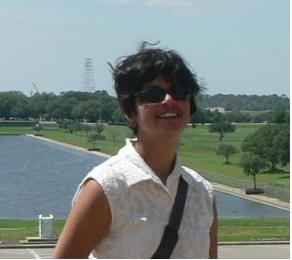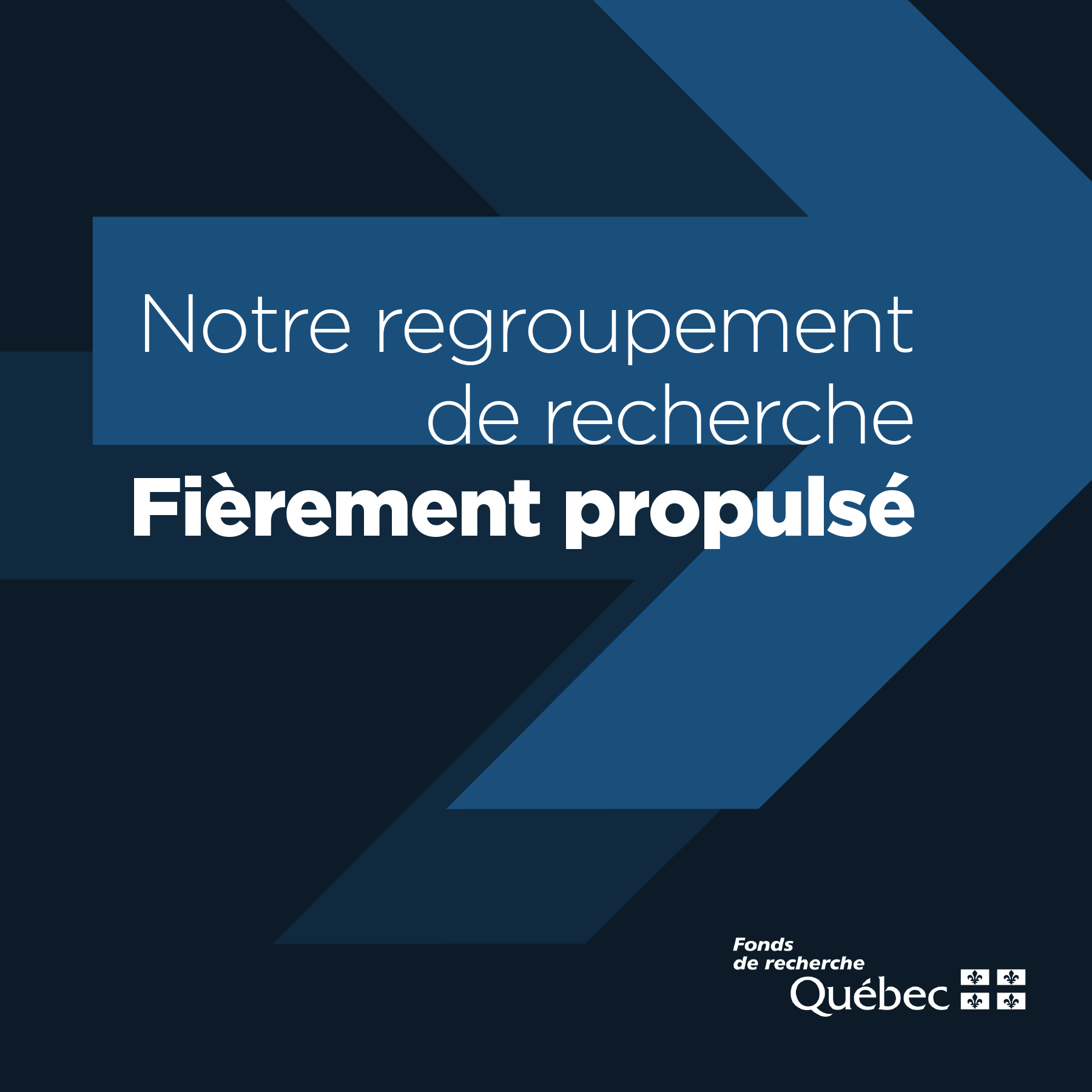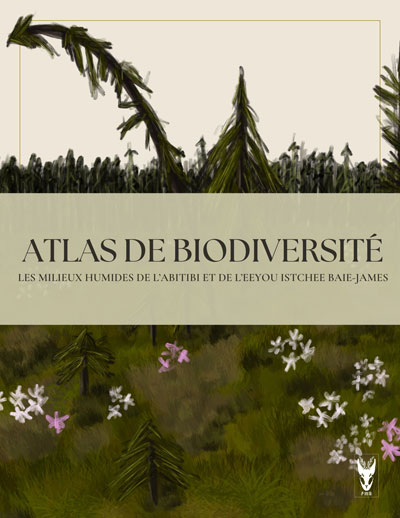
Udayalakshmi Vepakomma
Stagiaire Postdoctoral
Dynamique spatiale de la tordeuse des bourgeons de l’épinette au cours du dernier siècle en forêt boréale.
Directeur: Hubert Morin
Accueil | Formation académique | Thèmes de recherche | Current Project | Publications |
Formation académique
- Postdoctoral Fellow (2011), CEF-UQAR, Université du Québec à Montréal (Advisors: Profs. Frank Berninger, Robert Schneider)
- Postdoctoral Fellow (2008-2010), EEB, University of Toronto (Advisor: Prof. Marie-Josée Fortin)
- Ph.D in Environmental Sciences, 2008, ISE, Université du Québec à Montréal (Advisors: Profs. Benoit St-Onge, Daniel Kneeshaw)
- M.Phil. in Math-Statistics, 1992, University of Hyderabad, India (Advisor: Prof. R.J.R.Swamy)
- M.Sc. in Math-Statistics, 1990, University of Hyderabad, India
- B.A. (Math-Economics-Statistics), 1988, Osmania University, India
Thèmes des recherche
- Remote Sensing (lidar, optical and thermal sensing)
- Temporal GIS, 4D modeling
- Disturbance Dynamics
- Spatial ecology
Description de project
In this research we would be analysing the spread of spruce budworm (a major pest of conifers in North America) epidemics during the 20th century. Defoliation by this insect causes a characteristic reduction in growth of host trees during the event. Using chronologies of tree-ring width of spruce budworm host throughout its range from southern Quebec to circa 53rd parallel in the black spruce forests. We will identify locations and initiation of the insect attack, duration and intensity of the epidemic. Using geospatial informatics approach within a GIS framework we will project scenarios of epidemic spread and intensity. This should help understand susceptibility and vulnerability of host populations which is critical for future management of forests.
Publications
Peer- reviewed Journals
- Vepakomma,U., D. Kneeshaw, and M.J. Fortin. 2012. Spatial contiguity and continuity of disturbance in boreal forests through time: Gap persistence, expansion, shrinkage and displacement Journal of Ecology. 100: 1257 - 1268.
- Vepakomma,U., B. St-Onge, D. Kneeshaw. 2010. Boreal forest height growth response to canopy gap openings – an assessment with multi-temporal lidar data. Ecological Applications.21(1): 99-121.
- Vepakomma,U., D. Kneeshaw, and B. St-Onge.2010. Interactions of multiple disturbances in shaping boreal forest dynamics – a spatially explicit analysis using multi-temporal lidar data and high resolution imagery. Journal of Ecology. 98(3): 526 - 539.
- Vepakomma, U., B. St-Onge, and D. Kneeshaw. 2008. Spatially explicit characterisation of boreal forest gap dynamics using multi-temporal lidar data. Remote Sensing of Environment, 112 (5): 2326-2340.
- Vepakomma, U., M.S.R. Murthy, and C.B.S. Dutt. 1998. Efficient forest resources management through GIS and remote sensing. In “Use of RS & GIS in Ecology & Conservation Biology”: Current Science. 75(3): 272-282.
- Dutt., C.B.S. and U. Vepakomma. 1998. Micro-level planning and sustainable forestry using GIS analysis and modeling. In “Use of RS & GIS in Ecology & Conservation Biology”: Current Science. 75(3): 245-255.
- Jha,C.S., U. Vepakomma and C.B.S. Dutt. 1997. Pattern diversity assessment using remotely sensed data in the Western Ghats of India. Tropical Biology. 38(2): 273-283.
- Roy,P.S., C.B.S. Dutt. R.N. Jadhav, B. Ranganath, M.S.R. Murthy, B. Gharai, U. Vepakomma, A.K. Kandya and P.S. Thakker. 1996. IRS-1C data Utilization for Forestry Applications. Current Science, Vol. 70(7): 606- 613.
- Deekshatulu., B.L., P. Subhadra, K.R.Sasikala, K.V.N. Padmpriya, U. Vepakomma, T. Karunakar, P.V. Narasimha Rao, M.S.R.R. Vidhyadhar, M.V.V. Kamaraju. 1995. On some Applications of Statistical Methods in Remote Sensing, Indian Journal of Pure and Applied Mathematics , 26(6): 579-597.
Peer- reviewed Full Papers in Conference Proceedings
- D. Kneeshaw, Vepakomma, U. and St-Onge, B. (2012). L’influence des trouées sur la structure et la composition de la forêt mixte. Colloque écologie et sylviculture de la forêt mixte 2011, Quebec City, Canada; 21-24.
- Vepakomma, U. and M. J. Fortin. 2010. Scale-specific effects of disturbance and environment on vegetation patterns of a boreal landscape. In B.Koch, G. Kendlar et al (Editors) Proceedings of SilviLaser 2010, 10th international conference on Lidar for assessing forest ecosystems, Sep 14- 17, 2010, Freiburg, Germany. CDROM.
- Vepakomma, U., B. St-Onge, D. Kneeshaw. 2008. Height growth of regeneration in boreal forest canopy gaps – does the type of gap matter? An assessment with lidar time series. In Hill R.A., J. Rosette, J. and J. Suárez (Editors) Proceedings of SilviLaser 2008, 8th international conference on LiDAR applications in forest assessment and inventory, 17-19 Sept., 2008, Edinburg, UK, 159-167.
- St-Onge, B., U. Vepakomma, Y. Hu, and M. Wulder. 2005. Mapping above ground forest biomass using lidar data and multispectral images. In R.H.Wynne & R.F. Nelson (Editors) Proceedings of the Silviscan Conference: Lidar Applications in Forest Assessment and Inventory, 29 September–1 October, 2005, Blackburg,VA,USA. CDROM
- St-Onge, B. and U. Vepakomma. 2004. Assessing forest gap dynamics and growth using multi-temporal laser scanner data. 2004 In M. Thies, B. Koch, H. Spiecker and H. Weinacker, (Editors), Laser-scanners for forest and landscape assessment. Proceedings of the ISPRS working group VIII/2, International Archives of Photogrammetry, Remote Sensing and Spatial Information Sciences Vol. XXXVI, Part 8/W2, University of Freiburg, Germany, 173–178.
Book Chapters
- Vepakomma, U. and M.J. Fortin (2012) Computer-Aided Boundary Drawing, Entry in Volume VI: The History of Cartography, Mark Monmonier (Editor), University of Chicago Press (in Press).
- Gharai, B., M.S.R. Murthy, U. Vepakomma, and C.B.S. Dutt. 1998. “Regional scale estimation of forest evapotranspiration in tropical wet evergreen forest (Western Ghats – India)”, In Global Change Studies, Scientific Results from ISRO-GBP, B.H. Subbaraya, D.P. Rao, P.S. Desai, B. Manikiam and P. Rajaratnam (Eds.). ISRO Publication. 122-134.
Thesis
- Vepakomma. U. “Spatiotemporal charaterisation of gap dynamics and boreal forest responses using multi-temporal lidar data”. 2008. Ph.D. Thesis. UQAM. pp 226.
- Vepakomma. U. “Methods and Tools for Reliable Estimation of Allowable Annual Cut (AAC)”. 2005. Rapport de synthese, UQAM. pp 58.
- Vepakomma. U. “Designing sampling plans for variables for controlling fraction defective– underlying distribution being inverse Gaussian”. 1992. M.Phil. Thesis. University of Hyderabad. Pp 75.










